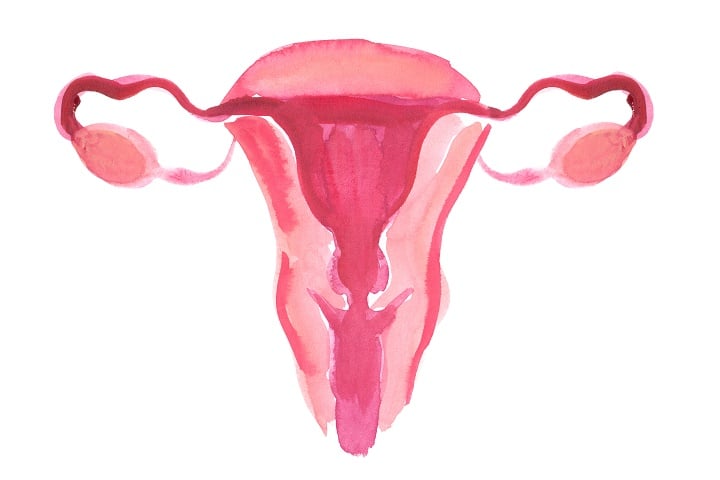
The big ‘C’ word can often be scary, but it’s vital that we know the tell-tale signs to help to reduce the risk. There are more than 360,000 new cancer cases in the UK every year, that’s nearly 990 each day! Unfortunately, more than 21,000 women are diagnosed with one of five forms of gynaecological cancer each year in the UK.
The team at Kegel8 want to spread awareness of the taboo topic for women without shame or embarrassment. It’s important to #KnowYourBody, so read on to learn about the five types of gynaecological cancers; Cervical, Ovarian, Vaginal, Vulval and Womb.
Knowing the Symptoms of Gynaecological Cancer
The five gynaecological cancers all share similar symptoms. The most common symptoms of gynaecological cancer include:
- Abnormal vaginal bleeding
- A persistent itch or pain in the vagina or vulva
- A lump or growth on the vulva or vagina
- Pain when urinating, or needing to urinate a lot
- A mole that changes shape or colour on the vulva
- Prolonged discomfort in your stomach or pelvic area
- Some women (with cervical cancer) show no symptoms at all until they have reached an advanced stage in their cancer.
Knowing Which Gynaecological Cancer
Cervical Cancer typically shows no symptoms at all, but abnormal bleeding can occur during or after sex, in between periods, or new bleeding after you have been through menopause. In 2016, there were 854 deaths from cervical cancer in the UK, yet 99.8% of cervical cancer cases are preventable, mainly through attending regular cervical screening examinations.
Ovarian Cancer is often characterised by discomfort in your stomach (prolonged bloating) or pelvic area. You may also find yourself needing to pee more often than usual. Ovarian cancer mainly affects women who have been through menopause (usually aged 50+) but can sometimes affect younger women.
Vaginal Cancer symptoms mainly include abnormal bleeding, a lump or itch, pain when urinating or needing to urinate a lot. Vaginal cancer is rare, especially in women under 40. In England, more than 80% of women will survive their cancer for 1 year or more after diagnosis, and around 55% will survive their cancer for 10 years or more after their diagnosis.
Vulval Cancer has some of the most noticeable symptoms. These include; a persistent itch or pain in the vulva; a lump or growth, abnormal bleeding; an open sore; pain when urinating; or a mole that changes shape or colour. Most of those who are affected by vulval cancer are older women aged 65 and over.
Womb (Uterine) Cancer can often lead to abnormal bleeding. There are nearly 9,000 cases of womb cancer each year, and 78% of women survive womb cancer for 10 years or more.
How to Treat Gynaecological Cancer
Surgery is the main method of treating gynaecological cancer in most cases. This involves removing as much cancerous tissue as possible, and can include the removal of pelvic organs such as the womb (hysterectomy), ovaries, and fallopian tubes.
Chemotherapy is often the treatment most associated with cancer. This medicine is used to relieve symptoms and kill any remaining cancer cells. Occasionally, it can be used before surgery to help shrink the cancer cells.
Radiotherapy is mostly used to treat vaginal cancer. It involves radiation from an external machine, or a temporary implant in your vagina that is used to kill cancer cells.
Learn More About Gynaecological Cancer
Help spread awareness of gynaecological cancer this September by encouraging others to #KnowYourBody.
For more advice or support for the issues mentioned in this blog, please use the following links:
Sources
[1] NHS (2018) Cervical Cancer [online]. NHS [viewed 01/09/2018]. Available from https://www.nhs.uk/conditions/cervical-cancer/
[2] NHS (2017) Ovarian Cancer [online]. NHS [viewed 01/09/2018]. Available from https://www.nhs.uk/conditions/ovarian-cancer/causes/
[3] Cancer Research UK (2018) Survival [online]. Cancer Research UK [viewed 01/09/2018]. Available from https://www.cancerresearchuk.org/about-cancer/vaginal-cancer/survival
[4] NHS (2018) Womb Cancer [online]. NHS [viewed 01/09/2018]. Available from https://www.nhs.uk/conditions/womb-cancer/
[5] NHS (2018) Vulval Cancer [online]. NHS [viewed 01/09/2018]. Available from https://www.nhs.uk/conditions/vulval-cancer/
[6] RCOG (2016) Gynaecological Cancer Awareness Month [online]. RCOG [viewed 01/09/2018]. Available from https://www.rcog.org.uk/en/blog/gynaecological-cancer-awareness-month-know-your-body/
[7] Cancer Research UK (2018) Cancer Incidence Statistics [online]. Cancer Research UK [viewed 01/09/2018]. Available from https://www.cancerresearchuk.org/health-professional/cancer-statistics/incidence#heading-Zero
[8] Centers for Disease Control and Prevention (2018) How are Gynaecological Cancers Treated? [online]. CDC [viewed 01/09/2018]. Available from https://www.cdc.gov/cancer/gynecologic/basic_info/treatment.htm



